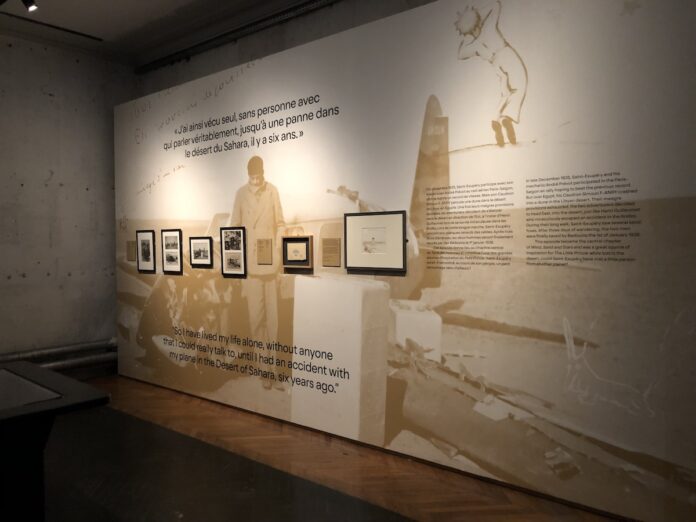PARIS: Antoine de Saint-Exup?ry was a true polymath — a writer, illustrator, mathematician, pilot, and resistance fighter. He was also a philosopher, writing in his timeless novella “The Little Prince,” “What is essential is invisible to the eye.”
The book, which has sold more than 200 million copies and been translated into around 500 languages and dialects, tells the story of a pilot whose plane crashes in the Sahara Desert, where he encounters the ‘little prince,’ who is full of questions. It’s a tale of wisdom, loss, and relationships, viewed as an autobiographical, anti-war masterpiece.
The Little Prince in classical Arabic. (AN/Rawaa Talass)
An exhibition at the Mus?e des Arts D?coratifs in Paris is displaying, for the first time, original manuscripts of “The Little Prince,” from The Morgan Library & Museum in New York. The 400-piece show, which runs until June 26, also features photographs of the author, as well as previously unseen drawings and handwritten letters.
The original version of “The Little Prince” was published in French in 1943 in the US, where Saint-Exup?ry — who spoke no English — resided at the time. The author died the following year, aged 44.
“Its message is very simple and universal. It’s about getting to know other people and accepting people and building friendship. It was a very necessary message after the war,” the show’s curator, Anne Monier, told Arab News.
Antoine de Saint-Exup?ry, the little prince looking at a mountain range, 1942 (Supplied)
A telling exhibit of the show informs visitors of Saint-Exup?ry’s own experience of crashing his plane in the Libyan Desert in the west of Egypt in 1935. Three days later, he and his mechanic were saved by bedouins. A drinking bottle and a wooden fragment from the plane’s wing are on display. “During this crash, Saint-Exup?ry saw little foxes and had some hallucinations. This is really the starting point of ‘The Little Prince,'” noted Monier.
Saint-Exup?ry also lived in North Africa, where he mixed in intellectual circles in the former French colonies of Algeria and Tunisia.
“He was fascinated by the desert,” Monier said. “It made a big impression on him. Even when he left the desert, it was always in his heart, in his mind. It was not just about passing through — the Middle East and North Africa had a very strong meaning for him.”


